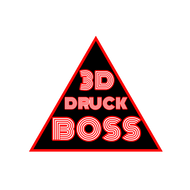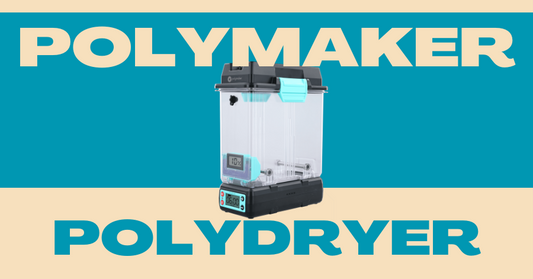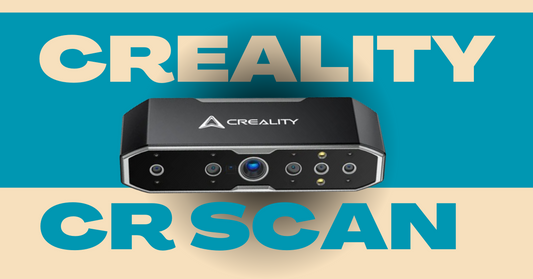
Tips and tricks to make 3D printing stick
Tips and tricks to make 3D printing stick
Table of contents:
- Introduction to the problem of sticking in 3D printing
-
The importance of proper print bed preparation
- Cleaning the print bed
- Use of adhesives
-
Optimization of print settings for better adhesion
- Layer height and print speed
- Adjustment of the first print layer
-
Material selection and its effects on adhesion
- PLA, ABS, PETG and other materials in comparison
-
Calibration of the printer for optimal adhesion
- Leveling the print bed
- Temperature control during printing
-
Troubleshooting: What to do if the print doesn't stick?
- Checking printer settings
- Cleaning and preparing the print bed again
-
Advanced techniques to improve adhesion
- Use of rafts and brims
- Use of adhesive sprays and adhesive tapes
-
Tips for special print objects and scenarios
- Large, flat objects
- Small and delicate models
- Voids and overhangs
-
Safety precautions when handling adhesives
- Avoiding excessive use
- Health protection measures
- Summary and Conclusion
Tips and tricks to make 3D printing stick
3D printing is a fascinating technology that makes it possible to create three-dimensional objects from a variety of materials. However, even experienced printer users often encounter the problem of lack of adhesion, which can result in incomplete or defective prints. In this article, we will look at various tips and tricks to ensure your 3D printing project goes smoothly by addressing the liability issue.
1. Introduction to the problem of sticking in 3D printing
In 3D printing, good adhesion is crucial so that the printed object stays on the build platform throughout the entire printing process. Adhesion problems can cause warping, peeling or deformation of the print, affecting the final result.
2. The importance of proper print bed preparation
Cleaning the print bed
A clean print bed is crucial for good adhesion. Dust, grease or residue from previous prints may affect adhesion. Therefore, clean the print bed regularly with isopropyl alcohol or a mild cleaning agent.
Use of adhesives
Adhesives such as hairspray, glue sticks or special 3D printing adhesives can improve adhesion, especially with difficult materials such as ABS. Apply the adhesive thinly and evenly to the print bed before you start printing.
3. Optimization of print settings for better adhesion
Layer height and print speed
Low layer height and slower print speed can improve adhesion by allowing for a more uniform first print layer.
Adjustment of the first print layer
Ensure that the first print layer is well pressed to the print bed by printing the first layers a little slower or by moving the nozzle closer to the bed.
4. Material selection and its effects on adhesion
Choosing the right printing material plays an important role in adhesion. PLA is known for its good adhesion, while ABS may require additional adhesives.
5. Calibration of the printer for optimal adhesion
Leveling the print bed
Proper leveling of the print bed is crucial to ensure that the first print layer is even and adheres properly throughout.
Temperature control during printing
The correct printing temperature for the selected material is important to ensure good adhesion. Experiment with different temperature settings to get the best results.
6. Troubleshooting: What to do if the print doesn't stick?
Checking printer settings
Check your printer settings to ensure they are suitable for the selected material and printing conditions.
Cleaning and preparing the print bed again
If the print does not adhere, clean the print bed thoroughly and apply additional adhesive if necessary before trying again.
7. Advanced techniques to improve adhesion
Use of rafts and brims
Rafts and brims are additional structures printed around the actual print object that can improve adhesion, especially for complex shapes.
Use of adhesive sprays and adhesive tapes
Special adhesive sprays or tapes can improve adhesion, especially with materials such as ABS, which tend to separate from the build platform.
8. Tips for special print objects and scenarios
Large, flat objects
For large, flat objects, it may be helpful to apply an additional layer of adhesive or slightly increase the print bed temperature to ensure even adhesion.
Small and delicate models
For small and delicate models, a slower print speed can improve adhesion by allowing more precise placement of the first print layer.
Voids and overhangs
It may be more difficult to achieve good adhesion with hollow or overhanging structures. Use supporting structures or brims to improve adhesion.
9. Safety precautions when handling adhesives
Avoiding excessive use
Use adhesive sparingly and be careful not to leave residue on other parts of the printer or the printed object.
Health protection measures
Some adhesives may release fumes or particles that may be harmful to health. When using adhesives, wear appropriate protective clothing and keep the work area well ventilated.
10. Summary and conclusion
A properly prepared print bed, the right selection of print settings and materials, and advanced adhesion techniques when appropriate can help your 3D printing project go smoothly without encountering adhesion issues.
FAQs (Frequently Asked Questions)
-
How can I prevent the 3D print from coming apart during the printing process?
- By thoroughly cleaning and preparing the print bed and using adhesives or advanced adhesion techniques such as rafts and brims.
-
What role does ambient temperature play in the adhesion of 3D prints?
- Ambient temperature can affect adhesion, especially for materials such as ABS, which are prone to warping. A constant room temperature can help ensure even adhesion.
-
Why do my 3D prints sometimes come off during the printing process?
- Adhesion problems can be caused by a variety of factors, including improper print settings, incorrect material selection, or inadequate print bed preparation.
-
Can I improve adhesion without using additional adhesives?
- Yes, by carefully calibrating the printer, selecting appropriate print settings and materials, and cleaning and preparing the print bed, you can improve adhesion without using additional adhesives.
-
What safety precautions should I take when handling adhesives?
- Wear appropriate protective clothing, ventilate the work area well, and use adhesives sparingly to minimize exposure to potentially harmful fumes or particles.






